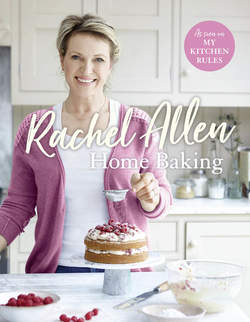Читать книгу Home Baking - Rachel Allen - Страница 7
ОглавлениеIngredients
Store-cupboard basics include flour (plain, self-raising and strong bread flour), butter, caster sugar, eggs and raising agents such as baking powder, bicarbonate of soda (bread soda) and yeast. Different flavours and interest are created by using combinations of whole or chopped nuts, ground almonds, seeds, dried or fresh fruit, spices, syrups, chocolate or the delicate flavours of vanilla, honey, lavender, rosewater or fresh herbs. If you like to bake often, you can keep a store of basics as above, but you could also buy whatever you need for recipes as you go.
Luscious finishes for cakes
For cake fillings and toppings, several recipes in the book have variations on the buttercream theme, with icing sugar and butter as their base. But you will also find fresh cream, cream cheese and crème fraîche toppings and chocolate glazes. I recommend buying plain chocolate with 55–62 per cent cocoa solids for use in the recipes in this book, as it has a rich flavour that works perfectly in bakes.
Baking with yeast
A range of recipes using yeast appear in the book, and it’s worth understanding the types of yeasts available, as they are not all used in the same way. Fresh yeast can be bought from some bakers and, if properly wrapped up, lasts in the fridge for up to a month. Fresh yeast has to be activated by adding it to lukewarm milk or water and leaving it for 5 minutes or until it starts to become creamy. It is then added to the flour. You can also buy two kinds of dried yeast from supermarkets: active dried yeast is used in exactly the same way as fresh yeast, by first mixing it with liquid. Active dried yeast is twice as strong so you need to use half the amount compared to fresh yeast. Fresh fast-action, or easy-blend, dried yeast is mixed straight into the flour without pre-activating it. Most of the recipes in the book call for fresh yeast or active dried yeast.
